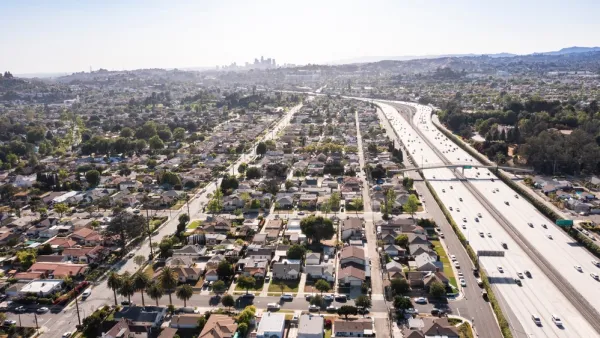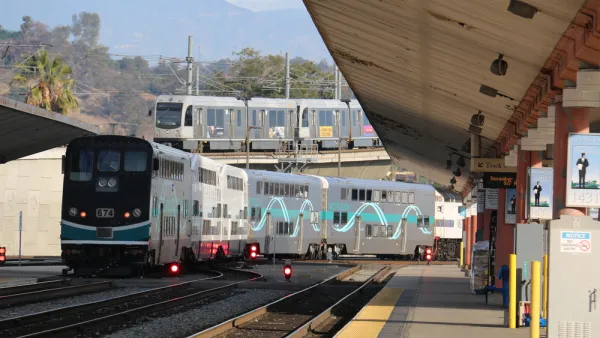Jeremy Rosenberg continues his fascinating series on the laws that shaped Los Angeles with a look at the local, and national, impact of the 1934 National Housing Act on residential development patterns.
In a prior article, Rosenberg examined whether Thomas Jefferson was to blame for L.A.'s sprawl. In this piece, he focuses his attention on the 32nd President.
The Federal Housing Administration (FHA) was created in 1934 by President Franklin Delano Roosevelt and his administration to help the country climb out of the Great Depression by stabilizing the mortgage market. "But, as H. Pike Oliver [senior lecturer and director of undergraduate studies at Cornell University's College of Architecture, Art & Planning] explains, purposefully or not, that's not all the FHA accomplished."
In addition to increasing home ownership nationwide, the FHA also impacted the physical form of residential development through design guidelines that were used to qualify subdivisions for financing, explains Oliver.
"Since states began following the FHA's design guidelines when
crafting their own mortgage-support programs, and since commercial
lenders tended to keep the same guidelines once private dollars started
flowing again, post Great Depression, what began as voluntary aims
became the defacto nationwide design standard," notes Rosenberg.
"And that standard, that shaping, resulted in nothing less than the
nationwide rise of suburbs, subdivisions, single-family homes,
cul-de-sacs, curvilinear streets, homes set far back from streets, grass
lawns in lieu of other planting, the decline of pedestrianism and just
about every other archetypical suburban hallmark."
Returning to the local impact of the law, Oliver contends that, "[t]he effect in Los Angeles was simply due to the massive amount of
development that occurred in the greater Los Angeles area following
World War II. The pace of activity was simply
unparalleled in the history of the nation to that point."
FULL STORY: The Birth of Sprawl: How Ending the Great Depression Meant Inventing the Suburbs

Analysis: Cybertruck Fatality Rate Far Exceeds That of Ford Pinto
The Tesla Cybertruck was recalled seven times last year.

National Parks Layoffs Will Cause Communities to Lose Billions
Thousands of essential park workers were laid off this week, just before the busy spring break season.

Retro-silient?: America’s First “Eco-burb,” The Woodlands Turns 50
A master-planned community north of Houston offers lessons on green infrastructure and resilient design, but falls short of its founder’s lofty affordability and walkability goals.

Test News Post 1
This is a summary

Analysis: Cybertruck Fatality Rate Far Exceeds That of Ford Pinto
The Tesla Cybertruck was recalled seven times last year.

Test News Headline 46
Test for the image on the front page.
Urban Design for Planners 1: Software Tools
This six-course series explores essential urban design concepts using open source software and equips planners with the tools they need to participate fully in the urban design process.
Planning for Universal Design
Learn the tools for implementing Universal Design in planning regulations.
EMC Planning Group, Inc.
Planetizen
Planetizen
Mpact (formerly Rail~Volution)
Great Falls Development Authority, Inc.
HUDs Office of Policy Development and Research
NYU Wagner Graduate School of Public Service




























